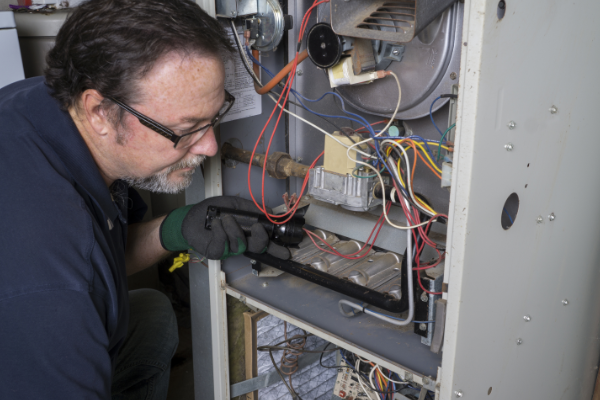
Nobody wants to see issues arise with their HVAC system, especially as it gets colder outside. Things can quickly get miserable when a home's heating system becomes ineffective or breaks down entirely. Instead of delaying repairs, follow these furnace troubleshooting steps and do your best to get the hot air flowing. If not, your local furnace repair expert can step in to assist.
Schedule Your Furnace ServiceSchedule an Appointment
Gas Furnace Operations
Before troubleshooting, let's cover the basics of a gas furnace. The system pulls cold air in from inside the home, passing through an air filter. The filtered air is warmed using a steel heat exchanger, which is then distributed throughout the house. It sounds simple, but it takes various components to complete the process, so there's always room for error.
Furnace Troubleshooting Procedures
Frozen Or Dirty Evaporator Coil
Before calling your local HVAC technician, ensure you have the thermostat on the heat setting and set above room temperature. If nothing happens, removing the cover and lightly dusting the interior thermostat components may be necessary using a soft-bristled brush.
Before moving on, ensure the thermostat isn't near any heat-generating appliances. If the thermostat is in an abnormally warm area of the home, it could inhibit accurate readings.
Inspecting Circuit Breakers
Circuit breakers commonly cause heating system failure, whether you're dealing with gas or electric furnaces. Ensure the breaker is in the "on" position and check nearby outlets on the same circuit to see if there is power loss elsewhere. If your furnace is receiving adequate power, it's probably a furnace problem.
The Air Filter Controls THE Flow
If you're getting power to the furnace, it's time to inspect your air filter. A clogged or dirty air filter can disrupt airflow, preventing proper function or failure in extreme cases. Check your home's air and furnace filters to clear debris and prevent air clogs.
Pilot Light
Many furnaces still use a pilot light to indicate gas flow in a propane or natural gas system. When there is a disruption to the gas flow, your furnace will shut off to prevent gas leaks.
If this flow of gas or propane is interrupted for any reason, your furnace will turn off to avoid leaking gas or propane into your home. Beyond inspecting to see if the pilot light is lit, we recommend calling a licensed HVAC professional to avoid incidents.
The Furnace Blower Motor
Your furnace blower motor pushes air through the heating system, controlling the output. There is a clear sight that should display a green or red light. If the light blinks errors, your blower motor could need professional attention.
Why Is My Furnace Running, But No Heat Is Coming Out?
Multiple issues could lead to your furnace blowing cool air or running without output. Air restriction will often cause inefficiency or even a lack of output with a gas furnace. The gas valve is another popular issue when a furnace will not produce heat.
Know When To Call The Professionals
Dealing with a gas furnace can result in serious injuries if done incorrectly. Homeowners can confidently troubleshoot basic thermostats, air filters, or flipped breakers, but more serious issues should be left to a licensed HVAC technician. A quick call to Air Central HVAC can initiate the furnace repair process.
Schedule an estimate with our team to check your heat output, find reduced efficiency, and keep your furnace blowing hot air.
Schedule Your Furnace Maintenance
